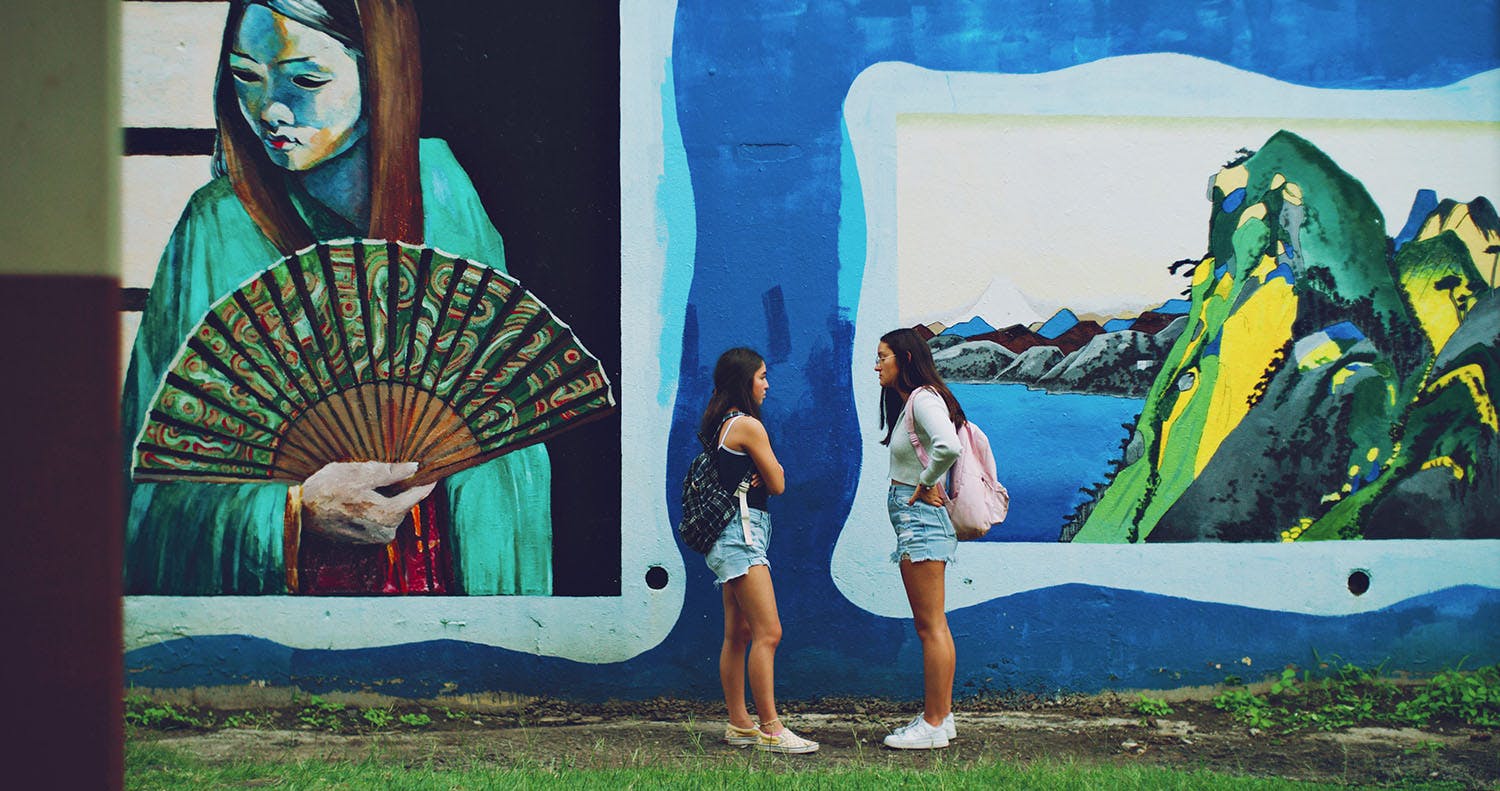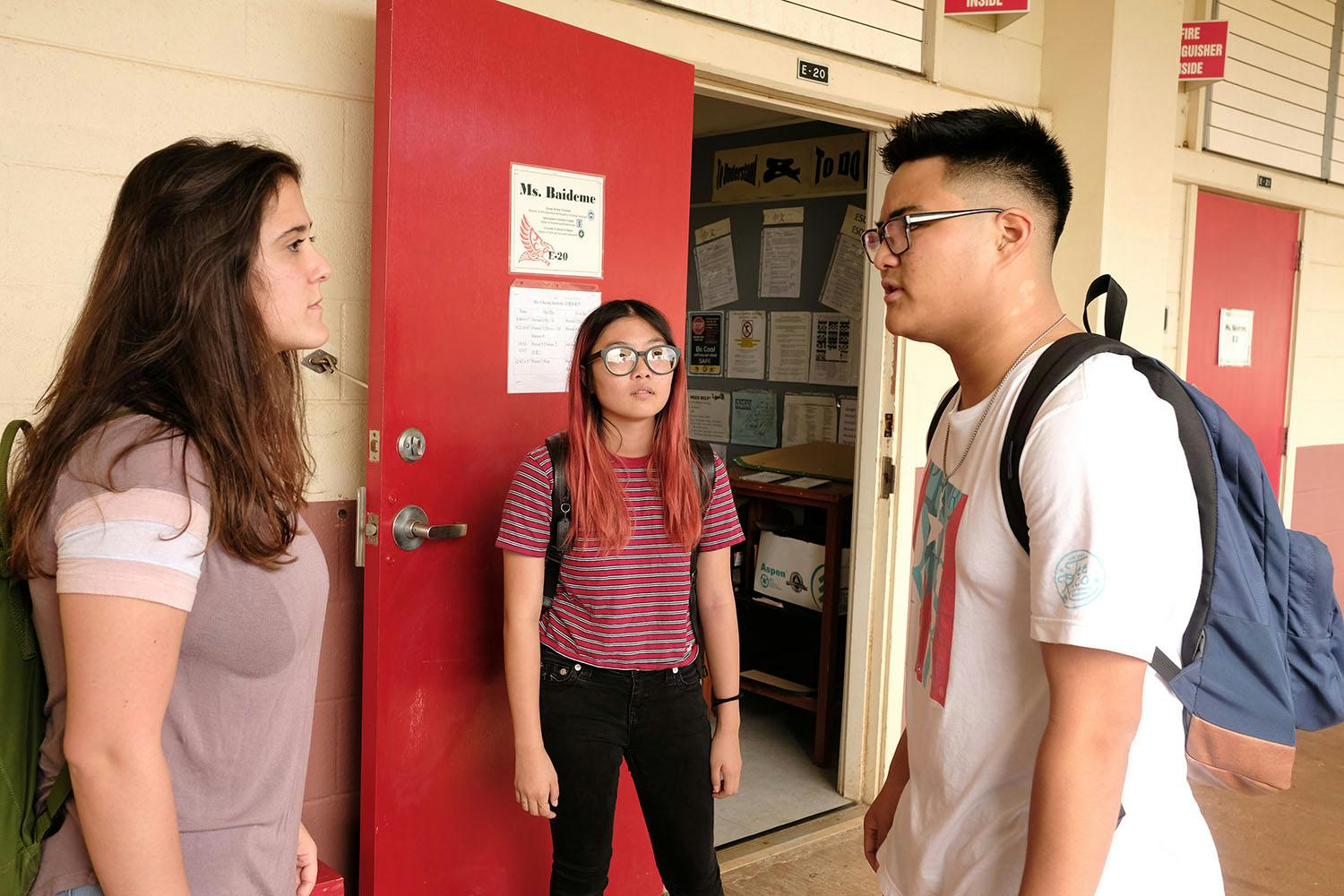
Photo courtesy Conscious Communities
Sulma Gandhi, Cohort III, has worked in the fields of health, human service, and education for the past two decades. Caring deeply about the well-being of the people of Hawai‘i, her roles have been focused on violence prevention and intervention: from domestic violence, child abuse and neglect, to suicide prevention.
In the classroom, Sulma found it difficult to find curricula that taught concepts surrounding violence prevention that also represented the rich diversity in Hawai‘i. She created Conscious Communities as a way to fill that void, developing an innovative curriculum, culturally-appropriate tools, and compelling films that reflect our islands.
Hawai‘i Leadership Forum (HLF): Tell us about Conscious Communities – what are you doing and how do you hope to have impact?
Sulma Gandhi (SG): Our communities are facing a multitude of crises; crisis of health, crisis of faith in civic institutions, crisis of inequity, crisis of violence. I envision a world without violence in our communities, and I founded Conscious Communities to create credible, accessible, upstream prevention programs that provide education, safety, and hope.
Conscious Communities has designed innovative, diverse, and inclusive films to empower organizations and individuals. Accompanying curriculum enables facilitated discussions surrounding interpersonal relationships--both healthy and unhealthy. By focusing on upstream prevention of interpersonal violence, we can break generational patterns and overcome the systemic inequities that stand in the way of violence-free, thriving communities.
I am honored to hold the thousands of stories of struggle that have been shared with me through the work that I do. I have learned most from survivors and young people who have expressed what could have prevented the abuse and the skills needed to resolve conflicts, establish boundaries, and and seek support.
HLF: What was the spark that led to this journey you have been on? What personally motivated you to take on this work?
SG: As a daughter of immigrants from India, I lived half my life in Canada in a small rural community that was 97% white. I was a stark minority, facing an education system that was euro-centric, and I had very few opportunities to see myself represented in what I was learning and experiencing in life. I understand deeply what it is like when everything around you is different--adapting to blend in and hoping to thrive. Despite experiences of racism, I never had a wish to be different—white, blonde haired, blue eyed—for the sake of ease. I love my culture and heritage.
I have now been in Hawai‘i for over 20 years – raising twin boys who are enjoying a vastly different upbringing than mine. We live in one of the most diverse communities in the nation. In this, I saw an opportunity for me to honor the abundance of our Islands.
As an educator in both K-12 and higher education, I grew tired of apologizing to my students for needing to adapt the curriculum. I showed films on meaningful concepts that did not represent our rich diversity, because there was nothing that existed surrounding these themes of violence prevention. Similar to my experience, I knew the students I was teaching could not see themselves in any of the content I shared about interpersonal relationships.
And yet, my greatest motivations are my boys that we are raising to be young men. I wanted them to learn and practice empathy, compassion, and communication skills. I need to ensure that they would be good friends and partners for their peers. I was reminded that we all want to be loved well, and we all want to love well.
HLF: How has your Omidyar Fellows experience and the Forum of Fellows contributed to this journey? How do you envision it might contribute in the future?
SG: The Omidyar Fellows experience has helped me acknowledge my strengths and the ways I can best contribute to the community. The golden thread in my personal and professional life has been one of social justice with an ultimate wish for peace and harmony. The Hawai�ʻi Leadership Forum also provided opportunities for professional development to support innovative community impact projects.
The Forum of Fellows have been supportive in so many ways: cheerleading, strategy, design, blind spot revelations, and resources. Our growing and vast network of lived experiences and connections allows us to gather around the big challenges of our communities and work towards sustainable, long-term new ways of being. In addition, our experience with COVID-19 has illuminated disparities so quickly and so severely, and I am inspired by the individual and collective ways that Fellows have come together for solutions, reform advocacy, and ideas for change.
HLF: Tell us about films you’ve produced for Conscious Communities – why did you choose to produce films on these topics?
SG: We have produced two films:
The film Woke is intended for the middle school audience. Woke speaks to students in languages and contexts that they can relate to – specifically social media platforms like YouTube and TikTok. The story focuses on Emilyʻs journey in coming to terms with, and breaking free from, an abusive relationship.
The film Face 2 Face is intended for the high school audience. Tracing the intersecting and intense relationships among four high school students, Face 2 Face explores the importance of appropriate bystander behavior and the critical role played by peers.
It was important in crafting these films to create stories that spoke to youth in the language and environments they now live in, which includes (for better or worse) a heavy dose of social media, that has tangential effects on violence they face. Moreover, these films take violence prevention further upstream than previous tools have, to where learned behaviors begin forming.
HLF: What would you consider a success you’ve experienced on this journey? And how could that success be replicated in other situations?
SG: Film is expensive to make. We were incredibly lucky to find partners who not only believed in prevention, but also were willing to provide resources to make our project possible.
I am humbled to have built a partnership with the production company Lumos Media who are focused on documentary storytelling and willing to try something new. This partnership allowed me to create fictional stories about nuanced forms of interpersonal violence and unhealthy behaviors featuring our local community. We took that leap and were met with much encouragement and support from others to create more films. We are now working with Fellows Karen Tan and Rachael Wong, who founded Safe Spaces and Workplaces, along with Beth Whitehead of American Savings Bank, to create vignettes of sexual harassment in the workplace that will be used in trainings.
HLF: What challenges have you faced? And how did you overcome or learn from them?
SG: In health and human services, the overall challenge is that most resources are directed towards intervention (e.g. shelters, medicine, hospitalization, policing, etc.). These services are absolutely essential, but our overall philosophy on how to create a well and thriving community must be reformed. Very few health and human services resources are earmarked for prevention. Despite the fact that most direct service providers believe prevention is crucial—and will say so explicitly—our actions and behavior as a community are the opposite. Our intervention programs need more support than they currently have. Long-term solutions require investment in prevention, and investment in our young people.
I continue to learn about the value of storytelling. The films I have produced are stories that are relevant, resonant, and representative of the lived experiences of our young people. As I practice and improve the storytelling of this work, I have encountered more partnerships and interested parties. And as an educator, I want to create something that is rich and lasting. I have learned over the years that it is important to focus on a few key concepts while still embracing diversity and inclusivity.

Photo courtesy Conscious Communities
Pacific Business News
